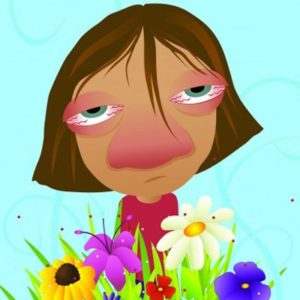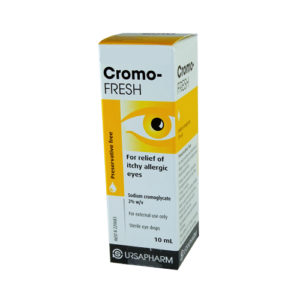Allergic conjunctivitis
 It is that time of the year again when thousands of people suffer from hay fever and itchy eyes. Allergic conjunctivitis is a spectrum of disease ranging from minor and self-limited hay fever conjunctivitis through to seasonal or perennial conjunctivitis. Allergic conjunctivitis is the most common form of eye allergy and is a hypersensitivity reaction to specific antigens. In seasonal allergic conjunctivitis, the most common allergens are pollens, with onset of hay fever-symptoms during spring and summer. Perennial allergic conjunctivitis is caused by allergens such as house dust mites or animal dander and may cause symptoms throughout the year. There are also more severe and potentially vision threatening forms of allergic conjunctivitis which include vernal keratoconjunctivitis (usually seen in children and teenagers, especially boys) and atopic keratoconjunctivitis (seen in adults and is strongly associated with other atopy, especially allergic excema of the face).
It is that time of the year again when thousands of people suffer from hay fever and itchy eyes. Allergic conjunctivitis is a spectrum of disease ranging from minor and self-limited hay fever conjunctivitis through to seasonal or perennial conjunctivitis. Allergic conjunctivitis is the most common form of eye allergy and is a hypersensitivity reaction to specific antigens. In seasonal allergic conjunctivitis, the most common allergens are pollens, with onset of hay fever-symptoms during spring and summer. Perennial allergic conjunctivitis is caused by allergens such as house dust mites or animal dander and may cause symptoms throughout the year. There are also more severe and potentially vision threatening forms of allergic conjunctivitis which include vernal keratoconjunctivitis (usually seen in children and teenagers, especially boys) and atopic keratoconjunctivitis (seen in adults and is strongly associated with other atopy, especially allergic excema of the face).
The most important symptom in allergic conjunctivitis is itching. The eyes can look red and the eyelids may be swollen. There may be a watery discharge in hay fever conjunctivitis or a thick ropy mucoid discharge in vernal conjunctivitis. The eyes may be more sensitive to light. Symptoms are usually bilateral (present in both eyes) but may be worse in one eye.
 Allergic conjunctivitis can be managed effectively. Avoid allergens if known, even if it means giving away the beloved pet L. Avoid rubbing the eyes as this releases more histamine. Prolonged eye rubbing and atopy is also associated with corneal conditions like keratoconus. Preservative-free artificial tears can bring relief by lubricating the eyes and flushing released histamine from the eyes. Cold compresses can be used for comfort.
Allergic conjunctivitis can be managed effectively. Avoid allergens if known, even if it means giving away the beloved pet L. Avoid rubbing the eyes as this releases more histamine. Prolonged eye rubbing and atopy is also associated with corneal conditions like keratoconus. Preservative-free artificial tears can bring relief by lubricating the eyes and flushing released histamine from the eyes. Cold compresses can be used for comfort.
Eyedrops are often used to relief the symptoms of allergic conjunctivitis. Antihistamine drops work by inhibiting the action of histamine in the body by blocking the receptors of histamine. Mast cell stabilisers work by stabilising the cell membrane and thereby preventing the release of histamine and related mediators. Mast cell stabilisers are used for prevention and need to be taken regularly to work. It takes 2 weeks to get full effect and they should be started 2 or 3 weeks before the expected season of symptoms starts. Dual action agents are also available and should also be used regularly but can have more immediate symptomatic relief than mast cell stabilisers. Oral antihistamines may relieve itching and reduce swelling. In more severe cases other eyedrops like topical corticosteroids and immunosuppressive eyedrops may be used under specialist supervision to monitor for potential side effects.
Talk to your optometrist or doctor about which eyedrops will be the best treatment for your condition as some of the mentioned eyedrops are only available from a pharmacy or on prescription.
